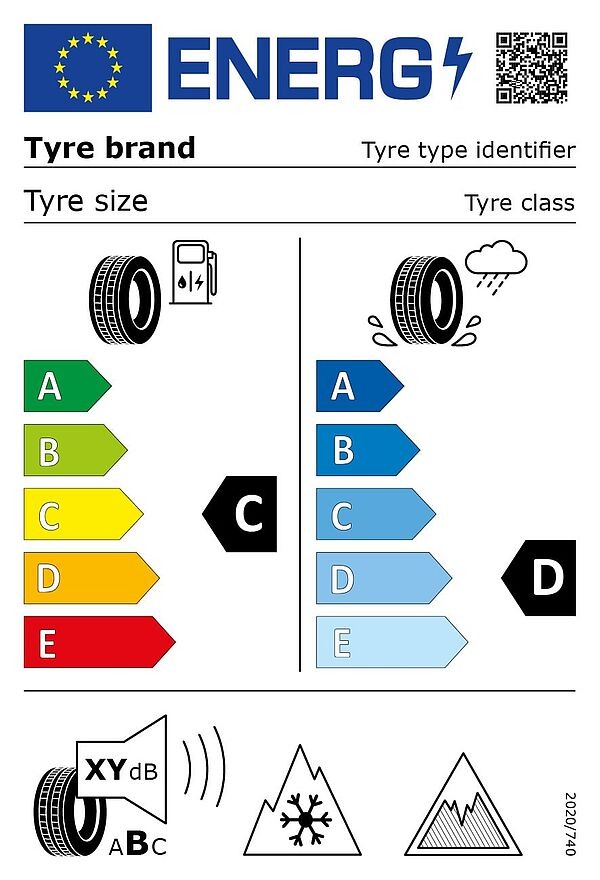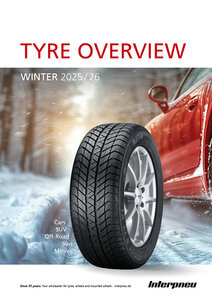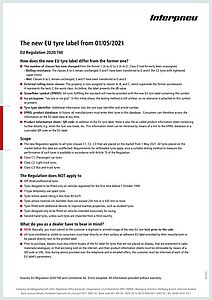The EU tyre label criteria under EU Regulation 2020/740
 Fuel efficiency class
Fuel efficiency class
Less rolling noise saves fuel and cuts CO2. This property is assigned to classes A to E.
The classes A, B, and C remain unchanged; E and F have been transferred to D and E (for C2 tyres with tightened upper limits.
 Wet grip class
Wet grip class
Wet grip is crucial to safe driving. This property is assigned to classes A to G. As an example, the difference between class A and class E braking distances is 18 m.
The classes A, B, and C remain unchanged; E and F have been transferred to D and E.
 External rolling noise class
External rolling noise class
The noise emitted by tyres affects the total noise levels emitted by the vehicle. As before, the label presents the dB value.
The former soundwaves ), )), and ))) are now the letters A, B, C.
 Snow grip
Snow grip
A new addition to the tyre label is the snow symbol. All tyres fulfilling the standard will now be provided with the new EU tyre label containing this symbol.
 Ice grip
Ice grip
Likewise new is the ice symbol (for C1 [car] tyres only). In this initial phase, the testing method is still unclear, so no relevance is attached to this symbol at present.
 Fuel efficiency class
Fuel efficiency class Wet grip class
Wet grip class External rolling noise class
External rolling noise class Snow grip
Snow grip Ice grip
Ice grip







